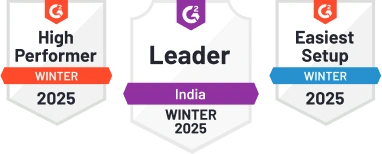Key Responsibility Areas (KRA) & Key Performance Indicators (KPI) for Automobile Floor Supervisor
1. Team Management
KRA: Managing and leading the automobile floor team to ensure efficient operations and high customer satisfaction.
Short Description: Supervising team performance and coordination.
- Employee turnover rate
- Customer feedback ratings
- Training hours per employee
- Team productivity metrics
2. Inventory Control
KRA: Overseeing inventory levels, ordering, and maintaining stock accuracy for efficient sales and service operations.
Short Description: Managing stock levels and procurement.
- Inventory turnover ratio
- Stockout rate
- Vendor performance metrics
- Inventory accuracy percentage
3. Customer Relations
KRA: Building and maintaining strong customer relationships through effective communication and problem resolution.
Short Description: Enhancing customer satisfaction and loyalty.
- Net Promoter Score (NPS)
- Customer retention rate
- Response time to customer queries
- Complaint resolution rate
4. Sales Performance
KRA: Driving sales targets, upselling opportunities, and maximizing revenue streams within the automobile floor department.
Short Description: Achieving sales goals and revenue growth.
- Sales conversion rate
- Average revenue per transaction
- Upselling success rate
- Market share growth
5. Quality Assurance
KRA: Ensuring adherence to quality standards, safety protocols, and regulatory compliance in all automobile floor operations.
Short Description: Maintaining high-quality standards and safety measures.
- Defect rate
- Compliance audit scores
- Safety incident frequency rate
- Quality inspection pass rate
6. Performance Evaluation
KRA: Conducting regular performance evaluations, providing feedback, and implementing training programs to enhance employee skills.
Short Description: Developing team capabilities and performance.
- Employee satisfaction scores
- Training completion rates
- Performance improvement metrics
- 360-degree feedback ratings
7. Cost Management
KRA: Monitoring and optimizing departmental expenses, budget adherence, and cost-saving initiatives without compromising quality.
Short Description: Controlling operational costs effectively.
- Cost per unit/service
- Budget variance percentage
- Cost reduction initiatives implemented
- Profit margin improvement
8. Process Improvement
KRA: Identifying inefficiencies, implementing process enhancements, and streamlining workflows for increased operational efficiency.
Short Description: Enhancing operational processes and workflows.
- Process cycle time
- Process error rate
- Adoption rate of new processes
- Process cost savings achieved
9. Market Analysis
KRA: Conducting market research, competitor analysis, and trend forecasting to drive strategic decision-making in sales and operations.
Short Description: Understanding market dynamics and trends.
- Market share growth
- Competitor benchmarking results
- Trend implementation success rate
- Customer demand forecasting accuracy
10. Technology Integration
KRA: Evaluating and implementing technology solutions to enhance operational efficiency, customer experience, and data management.
Short Description: Leveraging technology for business improvement.
- Technology adoption rate
- System downtime percentage
- Data security compliance metrics
- Customer engagement through technology







